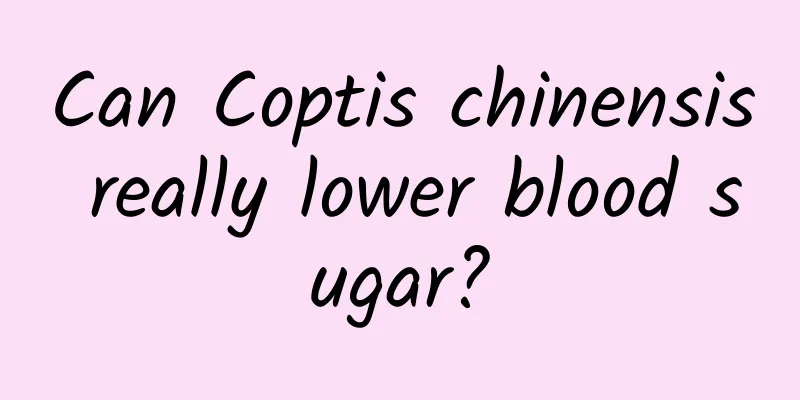The efficacy and function of monk fruit root

|
There are so many medicinal herbs in the world, and it is inevitable that there are some that we are not familiar with. But as long as we have the spirit of learning throughout our lives, I believe we can slowly learn more medical herbs. So do you know about the medicinal herb Monk Fruit Root? [Source] Medicinal material source: The root of Momordica grosvenori, a plant of the Cucurbitaceae family. [Original form] Perennial climbing herb. It has large tuberous roots that are fusiform or nearly spherical. The stem is slightly stout, with ridges and grooves, initially covered with yellowish-brown soft hairs and black verrucous glandular scales, then the hairs gradually fall off or become glabrous. The petiole is 3-10cm long, covered with the same hairs and glandular scales as the branches; the leaf blade is membranous, ovate-cordate, triangular-ovate or broadly ovate-cordate, 12-23cm long, 5-17cm wide, acuminate or long acuminate at the apex, with wavy margins, with small teeth due to the extension of the veinlets, with cilia, one side green, covered with sparse soft hairs and black verrucous glandular scales, which gradually fall off and become almost glabrous after old age, the lower side light green, covered with short hairs and mixed black verrucous glandular scales, which gradually fall off after old age. The beard is slightly stout, initially covered with short soft hairs, then gradually becomes hairless, bifurcated, and spirally curled above and below the bifurcation point. Dioecious; male inflorescence racemose, 6-10 flowers borne on the upper part of the inflorescence axis, also with short soft hairs and black verrucous glandular scales, slender pedicels, calyx tube bracelet-shaped, throat often with 3 oblong membranous scales, calyx lobes 5, triangular, apex awl-shaped tail tip, with 3 veins, veins slightly raised, corolla yellow, covered with black glandular dots, lobes 5, oblong, often with 5 veins, stamens 5, inserted below the tube near the base; two bases close together, while one separate, filament base swollen; female flowers solitary or 2-5 clusters borne on the top of a 6-8cm peduncle, calyx and pedicels are both shorter than male flowers, with 5 reduced stamens, ovary oblong, 10-12mm long, densely covered with yellow-brown hairs, style thick and short, stigma 3, swollen, sickle-shaped, 2-lobed. The fruit is spherical or oblong, 6-11cm long and 4-8cm in diameter. It is initially densely covered with yellow-brown hairs, the peel is relatively thin, and becomes brittle after drying. Seeds are numerous, light yellow, nearly round or broadly ovate, flattened, 15-18mm long, 10-12mm wide, obtuse at the base, slightly narrowed at the tip, slightly concave in the middle of both sides, surrounded by radial grooves, with wavy edges, dark red-brown when young, and white when mature. The flowering period is from February to May, and the fruiting period is from July to September. [Habitat distribution] Luo Han Guo root Radix Siraitiae Grosvenorii is produced in Guangxi and is self-produced and sold. [Properties] Property identification: The tubers are oblong, oval or conical, with a diameter of 5-12cm or larger. The outer skin is grayish yellow to brown, or with dark green patches, uneven, slightly rough, with fine wrinkles and transverse lenticels, and often with wart protrusions of varying sizes. There are often stem remnants on the top, and the lower part is mostly twisted, sometimes with several fine root remnants attached, with scar-like ends, hard and solid, flat cross-section, keratinous, yellow-white to yellow-brown. It has a faint smell and a bitter taste. 【Functions and indications】Diuresis and antidiarrhea; muscle relaxation. Mainly diarrhea; fat tongue; sequelae of meningitis [Usage and Dosage] For oral use: decoct in water, 9-15g; or grind into powder; or steam with pig brain. 【Excerpt】 Chinese Materia Medica Through the detailed introduction above, we have a good understanding of the efficacy and functions of the traditional Chinese medicine Luo Han Guo root. I hope this can be helpful to everyone. |
<<: The efficacy and function of Trachelospermum erythrorhizon
>>: The efficacy and function of Trachelospermum erythrorhizon
Recommend
How to avoid lightning correctly?
Where is it easy to be struck by lightning? How t...
Do you always feel suffocated after "two yang"? Therapists remind you: Be alert when these situations occur in your daily life!
After the "two yangs", some people felt...
The efficacy and function of Yingshi
As we all know, Yingshi is a very common medicina...
What are the effects and functions of ephedra root?
Ephedra is a very common Chinese medicine in dail...
It's not easy to be an astronaut! The latest study confirms that space flight may cause permanent bone loss in 20 years
It's cool and proud to break out of the earth...
The efficacy and function of tea root
Traditional Chinese medicine is a Chinese traditi...
Effects and functions of Dendrobium powder
Those who are familiar with Chinese medicine shou...
The efficacy and function of celery
Celery is a very common Chinese medicine and also...
The efficacy and function of watermelon seed shell
I believe many people are familiar with the Chine...
The "key" to unlock extraterrestrial life! How to detect life in icy bodies?
In the solar system, icy bodies represented by Eu...
We are all human beings, so why are there so many differences? — The answer from DNA
"Why is Yao Ming so tall, but I am so short?...
How to help children focus after a long vacation?
Summer vacation is almost over. Are your children...
What are the effects and benefits of drinking dandelion water?
In autumn and spring, you will immediately see a ...
What is true intelligence? In 2024, let yourself be a little more "dull"!
Think back, in the past year, have you often toss...
Which Chinese medicine is best for kidney tonification?
The kidneys are closely related to a person's...









